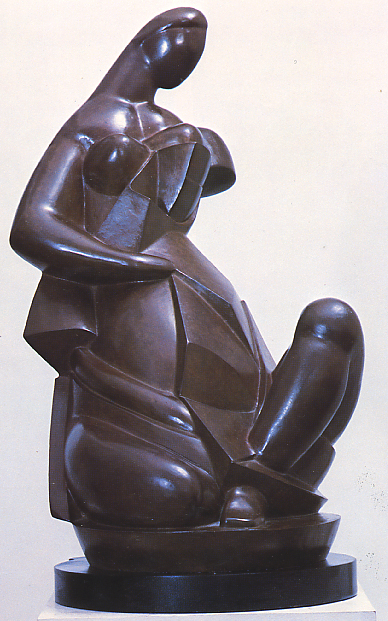Sculpture
Sculpture. A general term in visual art for three-dimensional representations made by carving or modeling in a variety of materials, of which stone and clay are the most widely used. Sculpture encompasses monuments and statues, which are usually large in scale and are meant for public display; decorative or ornamental works; intimate or private pieces; and small forms. Basically it may be divided into works that are freestanding and works that are attached to a background (relief sculpture).
In Ukraine sculptural depictions dating back to the Paleolithic Period have been found at the Mizyn archeological site (schematized female figures made from mammoth bones). Terra-cotta figures from the Trypillia culture and stone stelae have survived from the Bronze Age. The Scythians left behind beautiful examples of relief sculpture. Numerous examples of Hellenic figural sculpture have been found among the ruins of the ancient states on the northern Black Sea coast. These include heads of Aphrodite, Zeus, and Artemis, at the site of Olbia; a memorial bust (3nd–2rd century BC), at the site of Chersonese Taurica; and terra-cotta figures connected with the cults of Demeter, Aphrodite, and Astarte. Pre-Christian examples from the 1st millennium AD include the stone relief in the village of Busha, Vinnytsia oblast, of a kneeling figure, behind which stands a deer with antlers, praying to a tree with a rooster in it (1st century); stone idols, such as the one in the village of Ivankivtsi (see Ivankivtsi settlement), Khmelnytskyi oblast (4th–6th century); and the Zbruch idol, carved in low relief on all four sides of a block of stone. None of the wooden, gilded idols mentioned in the Rus’ chronicles have survived. Life-size freestanding stone baby dating from the 11th to 13th centuries AD were erected in the steppes of Ukraine by Turkic tribes. Thought to be tomb monuments of unknown function, these male and female figures in standing and sitting poses were bulky, schematized depictions differentiated by accessories of dress.
Only a few sculptures from the period of Kyivan Rus’ (10th–12th centuries) have been preserved. Two reliefs from Saint Michael's Golden-Domed Monastery in Kyiv show Saints Nestor and Demetrius and Saint George and Saint Theodosius of the Caves (11th century). The stylized, detailed hair and armor of Nestor and Demetrius suggest Eastern prototypes; the hair and armor of George and Theodosius show a greater simplification of planes, as in Greek models. Two panel reliefs found in the catacombs of the Kyivan Cave Monastery are thought to represent Hercules fighting a lion and Cybele on a chariot, themes from classical antiquity that have antecedents in sculptural reliefs found at the sites of Hellenic colonies on the northern Black Sea coast (see Ancient states on the northern Black Sea coast). A sarcophagus with relief carvings from the Church of the Tithes in Kyiv is thought to be that of Princess Olha, and the sarcophagus from the Saint Sophia Cathedral in Kyiv is considered to be that of Grand Prince Yaroslav the Wise, the founder of the shrine. The latter has relief carvings of crosses intertwined with plant motifs and depictions of fish and birds. The 16 stone panels in the Saint Sophia Cathedral (11 of which are in the choir section) are carved with geometric patterns interspersed with foliage, fish, birds, and crosses. The panel above the fresco (see Fresco painting) of Prince Yaroslav's family contains an eagle, an ancient symbol of Jupiter and the Roman emperors. The capitals of Saints Borys and Hlib Cathedral in Chernihiv (late 12th century) contain carvings of exotic part-dog, part-bird, and part-dragon animals similar to the likeness of the pagan god Simarhlo. These have antecedents in Romanesque sculpture, as do the carvings found in the main portals of Saint Panteleimon's Church in Halych.
Metal icons from the 12th and 13th centuries have been found near Kyiv (Crucifixion), and stone ones have been preserved in Kyiv (Saint Thomas and Christ) and Kaniv. The relief in stone of the Orante (13th–14th century) in the Kyivan Cave Monastery is stylized without much modeling, whereas 15th-century depictions, such as Mother of God with Saints Anthony and Theodosius of the Caves (1470) from the Dormition Cathedral of the Kyivan Cave Monastery, have fine three-dimensional modeling. One of the most beautiful carvings is the miniature four-part, folding wood iconostasis with multifigure panels (late 15th century) from Kamianets-Podilskyi. In general the development of sculpture in Ukraine was hindered by the hostile attitude of the Eastern church to sculptural images. Sculpture was limited to relief carvings, mostly in stone or wood.
As the influence of Renaissance art spread to Ukraine, particularly Galicia, sculpture became more common. There is an attempt to convey volume and movement in the high relief in stone of The Convincing of Thomas (mid-16th century) from the Armenian Cathedral in Lviv, but without an understanding of anatomy and proportions. Memorial tomb sculpture appeared with depictions of reclining and semireclining figures in Renaissance architectural settings similar to those found in northern Italy (the tombs of O. Lahodovsky, Adam Kysil, J. Herburt, Prince Kostiantyn Ostrozky, the Sieniawski family, and K. Ramultova). The Renaissance period also engendered carved and gilded wooden iconostases with classical orders and decorative details, such as that of the Dormition Church in Lviv, now in the church of Velyki Hrybovychi, Zhovkva raion, Lviv oblast. Secular buildings in the Renaissance style were lavishly decorated with carved reliefs. Architectural elements, such as the door and window frames of the Black Building and Korniakt building in Lviv, were embellished with decorative carvings on both the exterior and the interior. Relief sculptural decorations became common in church architecture. Examples may be seen in Lviv, in the exterior frieze of the Dormition Church, with carved plant motifs and figures in the metopes; the Chapel of the Three Church Fathers; and the Kampian and Boim family chapels, which have elaborately carved entablatures and a rich decoration of carved relief figures and ornaments.
During the baroque period (mid-17th to early 18th century) in Ukraine, relief carvings reached the zenith of their development in architectural decoration and in the multistoried iconostasis, rather than, as in western Europe, in three-dimensional sculpture. Baroque profiling, s-curves, and plant motifs, including typical Ukrainian elements such as stylized sunflower heads, embellished sacred and secular architecture. Ornately carved and sumptuously gilded wooden iconostases rose to new heights of splendor in churches such as the ones in Bohorodchany (17th century, by Yov Kondzelevych) and Rohatyn (1649–51). Emphasis shifted from painted icons and architectural elements to richly carved surfaces, and these eventually dominated the structures. Plant motifs were most common, although some figures found their way into the designs. Side chapels were also adorned with smaller carved iconostases. (Many of the magnificent baroque iconostases in Kyiv and elsewhere were destroyed by the Soviet regime in the 1930s.) Nizhyn, in the Chernihiv region, and Zhovkva, in Galicia, became centers of iconostasis production. Sculptors such as Yurii Shymonovych-Semyhynovsky, S. Putiatytsky, O. Kuliavsky, V. Sakovych, and H., I., and S. Stobensky worked out of Zhovkva. One of the finest baroque iconostases was in the Zhovkva Church of the Holy Trinity (ca 1720), where baroque devices such as the play of light and dark, dynamic movement, and dramatic contrasts of curved and perpendicular forms and smooth and heavily carved surfaces were used to full advantage. One of the largest surviving iconostases was installed in the Transfiguration Church in the village of Velyki Sorochyntsi, in the Poltava region, in 1732. It is 20 m wide and 17 m high, and so lavishly carved that the columns have lost their structural elements and resemble bouquets and flowering fields. The Royal Gates of the iconostasis in the Saint Sophia Cathedral in Kyiv, commissioned by Metropolitan Rafail Zaborovsky in 1747, are a masterpiece of late baroque Ukrainian art. Carved entirely in silver and covered in gold, they were removed by the Soviet authorities between 1935 and 1937, as were eight chapel iconostases.
The best and most numerous examples of three-dimensional sculpture are to be found in Galicia (in the rest of Ukraine the Orthodox church continued to oppose figural carving). There sculpture was incorporated into church and secular architecture (eg, the city hall in Buchach). Figural sculptures were particularly popular in Roman Catholic churches. In the Dominican Church in Lviv, for example, 18 figures in the second story beneath the dome were carved by S. Fessinger. Sculpture in the round was incorporated into the architecture of Ukrainian Catholic churches, such as Saint George's Cathedral in Lviv.
These achievements resulted from efforts by talented local sculptors and imported ones, such as Jan Pfister and Johann Georg Pinzel. In Pinzel's carved Crucifixion with Mary and Saint John (1750s) in Saint Martin's Church in Lviv, the polychromatic wooden figures are unequaled in the clarity of their contrasting planes and their dramatic juxtaposing of drapery folds. In contrast the polychromatic figure of Saint Michael the Archangel, the patron saint of Kyiv, from the tower of the town hall in Kyiv lacks sophistication. It was executed from two sheets of copper fitted over a silhouette.
The aristocracy and the rich continued to commission tomb sculptures and memorial wall plaques carved in relief. A fine example is A. Schlüter's monument to Jan III Sobieski and S. Danilowicz in Zhovkva, which incorporates two allegorical figures and putti with the central urn. Examples of ceramic sculpture, such as the coat of arms of Hetman Ivan Mazepa on the exterior of Chernihiv College, the reliefs of Virgin Mary and saints in the niches on the gates of the Novhorod-Siverskyi Transfiguration Monastery, and various decorations for secular buildings in Kyiv and Pereiaslav, have survived.
Rococo sculpture in the round was characterized by elongated proportions and contrapposto poses, and it continued to be an organic part of the architectural design of buildings (eg, the statues in the Catholic cathedral of Kamianets-Podilskyi, 18th century). Decorative carvings, however, became more delicate and graceful and often appeared to float on the surface. The popularity of high, ornate iconostases did not diminish, but the carved decorations became somewhat lighter and more whimsical, and the iconostases therefore more subdued, as in the cathedral of the Mhar Transfiguration Monastery (1762–5, by Sysoi Shalmatov), Saint Andrew's Church in Kyiv (1760s), and the Cathedral of the Nativity of the Mother of God in Kozelets (1760s). Angel heads carved in the round were used to decorate the interior of Saint Andrew's Church, and shell-like forms were incorporated into asymmetrical designs. The iconostasis from the wooden Church of the Holy Protectress (carved by Shalmatov, 1768–73) in Romny is a rococo masterpiece, with irregular sections and carved figures in places usually reserved for painted icons. These include the central Crucifixion, the city-fortress in a cartouche below it, and the Annunciation carved in relief into the Royal Gates, which provide the architectural setting. Three-dimensional, life-size figures of Zacharius, Aaron, John the Evangelist, and John the Baptist appear in the third story. The iconostasis is topped with a beautiful composition showing the skillfully modeled figure of God carved in high relief on a background of swirling roses, putti heads, and fanciful seashell forms.
Classicism appeared in the mid-1750s and brought with it a return to the harmony, clarity, and serenity of antiquity. It did not become widely accepted, however, until the beginning of the 19th century. The Empire style was a development of classicism inspired by Greek rather than Roman prototypes and was more geometric and austere. Classicism coincided with the decline of Ukrainian autonomy and the annexation of eastern and most of central Ukraine by Russia. Russian domination brought about the loss of cultural freedom. Under tsarist rule all building designs had to be approved by the imperial government in Saint Petersburg. Among Ukrainian artists working in the classical style were Ivan P. Martos, M. Kozlovsky, and Kostiantyn Klymchenko, all of whom worked mostly in Russia. Martos executed several monuments in Ukraine, including the statue of Armand-Emmanuel du Plessis duc de Richelieu (1823–8) in Odesa. He also designed the grave monument to Hetman Kyrylo Rozumovsky (1803–1805) in Baturyn.
The unprecedented emphasis on civic architecture and urban planning during the classicist period created a need for public sculpture of the type formerly unknown in Ukraine. Freestanding sculptures resembling classical models appeared as civic monuments (eg, Ivan P. Martos's statue of Armand-Emmanuel du Plessis duc de Richelieu in Odesa) and as decorative features in city squares, parks, and gardens. The famous landmark statue of Saint Volodymyr by V. Demut-Malinovsky and P. Klodt (1850–3) overlooking the Dnipro River is one of the most popular examples of classical sculpture in Kyiv. Most monuments, however, were dedicated to the tsars and their appointees.
In Western Ukraine under Austro-Hungarian rule, the need for civic sculpture was at first met by imported talent from Central and Western Europe, like H. Wittwer, who was trained in Vienna, and Anton Schimser, who received training in Vienna and Paris. Wittwer created the sculptures of the four fountains (1793) in Rynok Square in Lviv, which he modeled on the classical figures of Diana, Neptune, Adonis, and Amphitrite. The relief carvings of mythological and allegorical figures on the former Credit Society Building in Lviv were done by Wittwer and Schimser. Schimser also executed the Trenkle-Breyer-Venkle family monument in the Lychakiv Cemetery, composed of an angel, a grieving woman, and a youth in classical drapery carrying the symbolic vessel of sadness and tears.
In the second half of the 19th century romanticism and realism replaced classicism. The life of the peasants was depicted by H. Krasutsky in the four niches above the second story in the ‘Four Seasons’ Building in Lviv. In Russian-ruled Ukraine Fedir Balavensky introduced ethnographic elements into his allegorical sculptures Life and Charity and created portrait busts of famous Ukrainian writers. Ukrainian themes became prevalent in the work of Yelyzaveta Trypilska, who worked in marble and ceramic (At the Market, 1918). Petro Viitovych executed the figures for the Lviv Opera House, and Hryhorii Kuznevych worked on tomb sculptures and several portrait busts of Taras Shevchenko.
The monument to Hetman Bohdan Khmelnytsky (1888) in Kyiv was executed by the Russian sculptor Mikhail Mikeshin in a realist style. Ukrainian sculptors who worked in the realist manner were the versatile Leonid Pozen, Borys Edvards, and Parmen Zabila, whose work was influenced by academism in sculpture.
Many Ukrainian sculptors studied in Paris and were influenced by Auguste Rodin and the impressionists. Among them were Mykhailo Parashchuk (who later worked in the academic style in Sofia, Bulgaria), Eleonora Blokh, Mykhailo Brynsky, Mykhailo Havrylko, and Bernard Kratko.
Alexander Archipenko is the most famous Ukrainian sculptor. In the 1910s he created some of the first cubist sculptures (Walking [1912], Gondolier [1914]), experimented with constructions in a variety of materials and abstraction, and revived polychromatic sculpture. His later portrait busts of Taras Shevchenko and Ivan Franko are realistic depictions lacking the innovative approach for which he was famous. Another pioneer of modern sculpture and the father of constructivism, Vladimir Tatlin, spent most of his creative years working in Russia, where he was one of the leading figures of the Russian avant-garde. In Kharkiv in the 1920s, Vasyl Yermilov explored constructivism in his wood and metal ‘experimental compositions’ and ‘constructions,’ which were colored in an attempt to warp a continuous surface. Cubism influenced the early work of Ivan Kavaleridze, who participated in the avant-garde of the 1910s in Ukraine and in the 1920s created cubist monuments in Ukraine (monument to T. Shevchenko) before succumbing to socialist realism (eg, Lenin and Gorky, 1952). Other sculptors of the 1920s and 1930s were less inventive and remained loyal to realist traditions. They included Ivan Severa, Yevhen Sahaidachny, M. Novoselsky, Hryhorii Tenner, A. Pysarenko, Zhosefina Dindo, and V. Klimov.
In Soviet Ukraine sculpture, like all the arts, has been subject to the dictates of socialist realism and the Communist Party control since the 1930s. As a result most works have glorified the Bolshevik October Revolution of 1917, Party leaders, workers, peasants, and Soviet heroes. Sculpture was particularly pompous during the Stalinist period, in which thousands of monuments to Vladimir Lenin, Karl Marx, Joseph Stalin, and Maxim Gorky were erected. Notable sculptors who have worked in the socialist-realist manner are Mykhailo Lysenko, Ivan Makohon, Halyna Petrashevych, Yakiv Razhba, Anatolii Bilostotsky, Ivan Znoba, Hryhorii Pyvovarov, Valentyn Znoba, Teodosiia Bryzh, Vasyl Borodai, Dmytro Krvavych, Yosyp Sadovsky, Halyna Kalchenko, Ivan Honchar, and Emmanuil Mysko. M. Hrytsiuk, who modeled expressive figures not in keeping with socialist realism (Artemii Vedel), together with Yulii Synkevych and Anatolii Fuzhenko executed the Taras Shevchenko monument in Moscow (1964). Halyna Sevruk, who works in ceramic relief sculpture and gets her inspiration from Ukrainian historical themes, had difficulties exhibiting her work until 1988.
The policy of glasnost introduced in the late 1980s made it possible for many young sculptors in Ukraine to explore individual visions and experiment with new forms and materials. Several of them have worked in ceramic sculpture or terra-cotta—V. and N. Isupov, A. Ilinsky, O. Kostin, L. Krasiuk, O. Mylovzorov, M. Khusid, and Roman Petruk. M. Andrushchuk and H. Drul have created abstract figures in stone, E. Kotkov has experimented with constructions in space, and M. Malyshko has worked in wood.
In the postwar years several émigré sculptors gained prominence: Hryhorii Kruk and Vasyl Masiutyn in Germany; Leonid Molodozhanyn in Canada; Serhii Lytvynenko, Andrii Darahan, Valentyn Simiantsev, Mykola Mukhyn, Antin Pavlos, Mykhailo Dzyndra, Petro Kapshuchenko, Mykhailo Chereshnovsky, and the abstractionists Konstantin Milonadis, Alexander Hunenko, and Mykhailo Urban in the United States; Fedir Yemets in Venezuela; and Hryhorii Petsukh in Poland. Many sculptors of Ukrainian origin have worked in North America: in the United States, Yaroslava Gerulak, who specializes in ceramic sculpture, Mirtala Bentov, who creates symbolic bronzes using geometric shapes and greatly reduced figural forms, A. Farion, who carves in stone, Ya. Harabatsch, who works with abstracted shapes, L. Koverko, and Yu. Strutynsky, who works in constructed reliefs; and in Canada, R. Kosteniuk, who creates abstract constructions based on the structure of living organisms, Don Proch, whose work includes space-age masks, assemblages, and installations, Edward Zelenak, who creates abstract fiberglass compositions, and R. Yuristy, who constructs large-scale animal pieces for outdoor spaces.
BIBLIOGRAPHY
Nimenko, A. Ukraïns'ka skul’ptura druhoï polovyny XIX–pochatku XX st. (Kyiv 1963)
Bazhan, M. (chief ed). Istoriia ukraïns’koho mystetstva v shesty tomakh, 6 vols (Kyiv 1966–70)
Varvarets’kyi, Iu. Stanovlennia ukraïns’koï radians’koï skul’ptury (Kyiv 1972)
Garkusha, N.; et al. Monumental’noe i dekorativnoe iskusstvo v arkhitekture Ukrainy (Kyiv 1975)
V pam'iati narodnii (Kyiv 1975)
Zapasko, Ia. (ed). Mystetstvo onovlenoho kraiu: Naukovo-populiarnyi narys (Kyiv 1979)
Mozdyr, M. Ukraïns’ka narodna derev’iana skul’ptura (Kyiv 1980)
Liubchenko, V. L’vivs’ka skul’ptura XVI–XVII stolit’ (Kyiv 1981)
Afanas’iev, V. Ukraïns’ke radians’ke mystetstvo 1960–1980-kh rokiv (Kyiv 1984)
Daria Zelska-Darewych
[This article originally appeared in the Encyclopedia of Ukraine, vol. 5 (1993).]
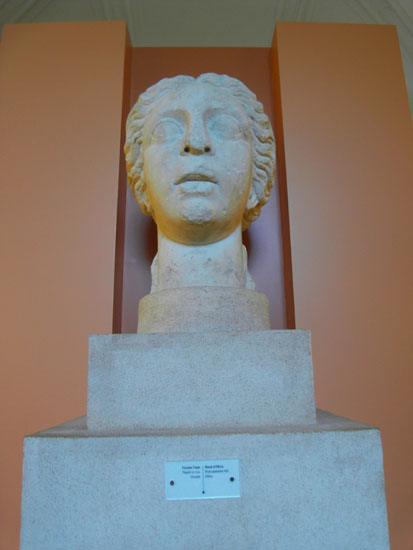
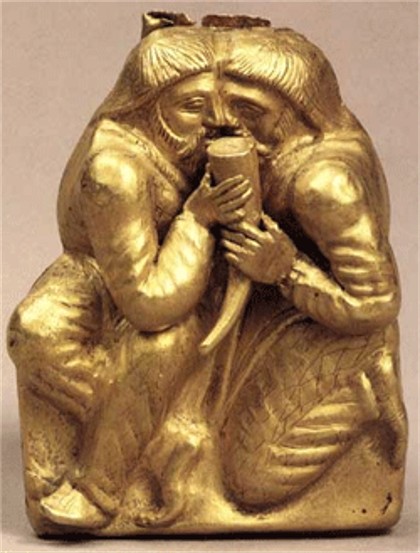
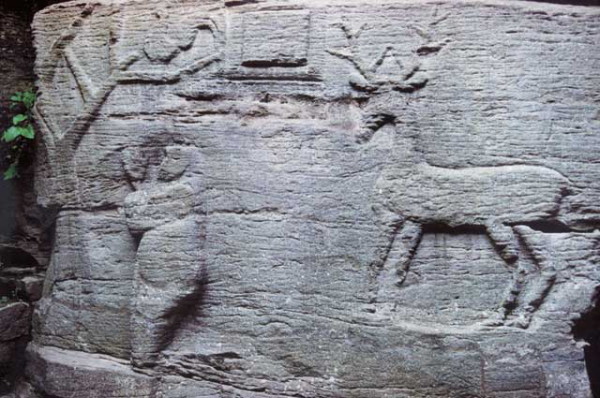
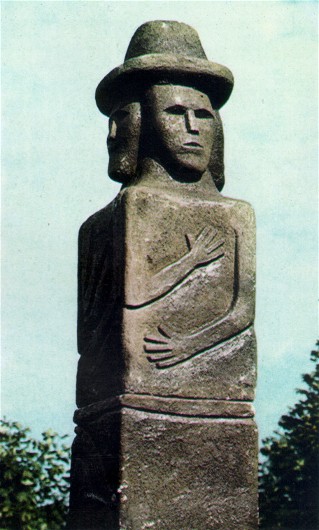
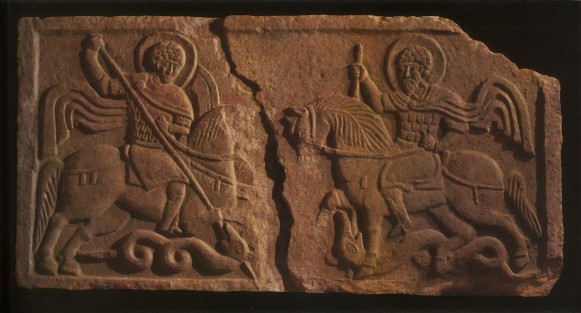
.jpg)
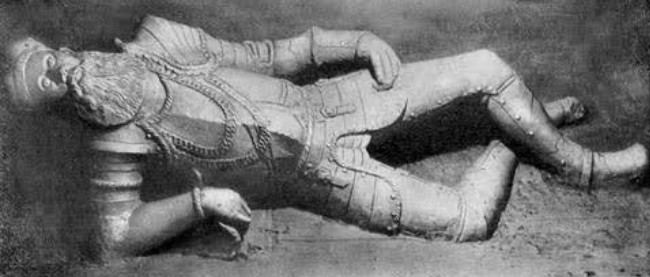
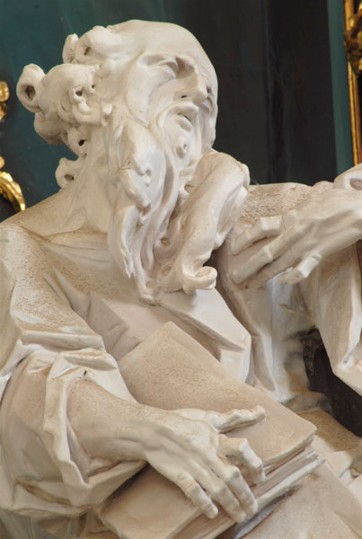
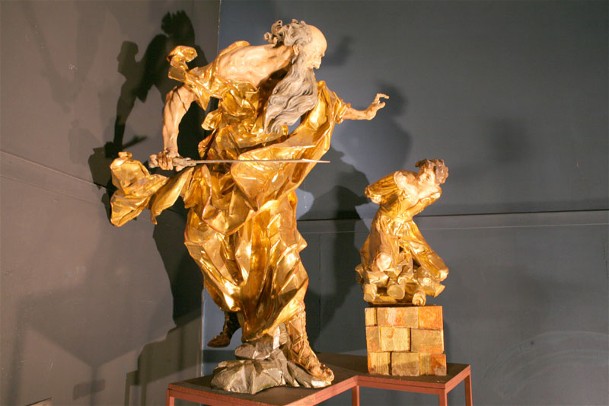
.jpg)

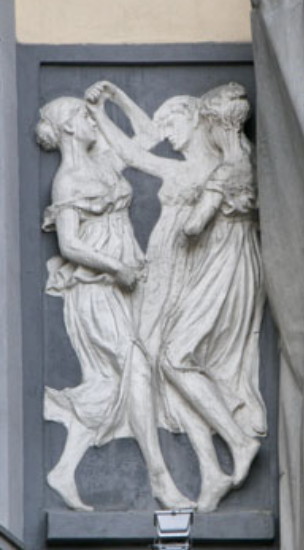
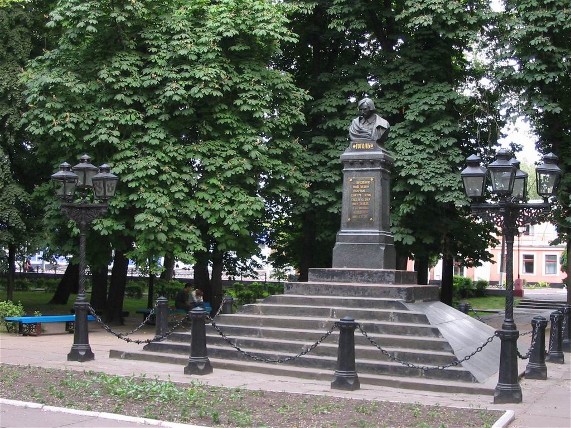
.jpg)
